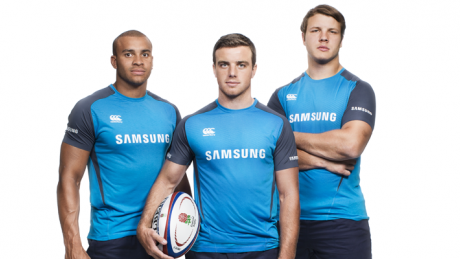Joe Launchbury: 'You won't ever see me on a treadmill'
England’s hard-working lock reveals how he has to adapt his training to suit his big frame

A year ago England’s Joe Launchbury was uncertain when he’d play his next match at any level, let alone at the 2015 Rugby World Cup. But after surgery and four months of patient rehab he’s back in the international fold, playing his first match since a nerve problem triggered by a bulging disc in his neck put him on the sidelines.
The 24-year-old lock made a rampaging return to the Red Rose, despite a defeat in England’s second pre-tournament warm-up match. Now he’s focusing on making a winning return to the side with the opening game of the home tournament fast approaching. Here he outlines how the highs and lows of training have turned him into one of the fittest and most mobile second-row forwards in world rugby.
More people are going to watch the World Cup this year than ever before. There are more ways to watch it on TV and online. I’ve been working with Samsung to help bring rugby to as big an audience as possible and get as many people involved and enjoying it, and that can only be a good thing for English sport.
Training for the World Cup is unique. Unlike with the Six Nations, we’ve been together for a really long period for conditioning and to get in the best shape as possible – so much attention has been put on fitness. But we’ve also had a chance to work on all the other factors that go into making a successful team. We do a lot of skill work, contact work and team work, and it all improves us as rugby players.
The closer we get to a match, the more we step up the power. At the start of a match week we have more emphasis on strength and lifting weights, but as the week goes on training becomes more performance-based. We switch to more speed and agility drills. Then we become more power-focused in the gym to prepare ourselves for what’s coming at the weekend.
I try to avoid the treadmill at all costs. I enjoy being quite heavy but that means I’m better suited to low-impact exercises to protect my joints. For a quick cardio blast, Wattbikes and rowing machines are brilliant. I do lots of the standard weights moves – the bench press for my chest, rows for my back and various overhead presses. It’s based around strengthening the major muscle groups that you need to perform.
My long limbs make some exercises very tough. Nordic hamstring exercises are pretty hard – when someone holds your ankles as you’re kneeling and you let yourself fall forwards, using your hamstrings to resist gravity. With my long limbs – and my large bodyweight – I’m not well suited to them, but they’re vital for strengthening and protecting those muscles.
Get the Coach Newsletter
Sign up for workout ideas, training advice, reviews of the latest gear and more.
What you eat after a match is much more important than what you eat before. The day after a game, I eat and drink much more than on a usual day to replenish what I’ve lost. On a match day I don’t eat much at all. I also make sure I get as much sleep as possible over the two days afterwards. Recovery is such a massive part of the game and making sure you get that right when the games are coming thick and fast is vital.
Keeping preseason training short and steady will keep you coming back for more. A lot of people go in and do a big long session once and get bad DOMS [delayed onset muscle soreness]. Then they may not go back again or might not go back for a few weeks. You can get a lot done in a short space of time, so a good 20- or 30-minute workout is more than enough.
Bodyweight exercises are the best way to get in shape. Trying to lift as heavy as you can for low reps has its place but you’ll just end up sitting around not doing much while you recover. If you’re a beginner it won’t really get you anywhere. Doing lots of bodyweight exercises – press-ups, lunges and squats – for high reps is more fun and much more effective.
Samsung is an official partner of the RFU and England Rugby Team. As a brand ambassador, Joe Launchbury will feature in the Samsung School of Rugby campaign launching in September. To keep up to date visit SamsungSport on Twitter and Facebook.
